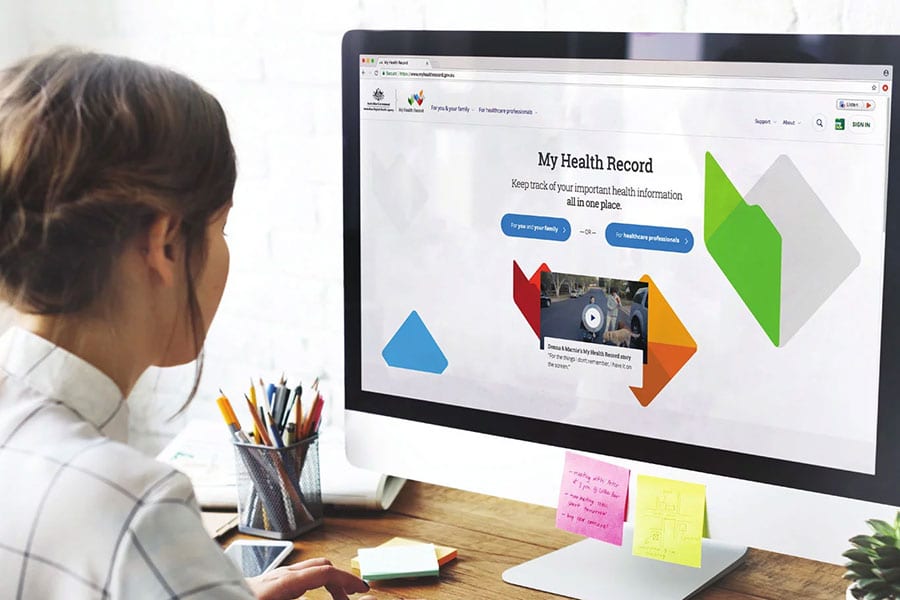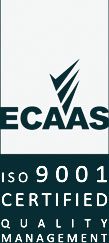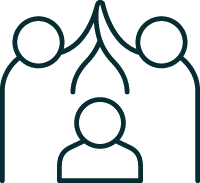Image: Australian Government
From today all Australians will be able to decide if they want a My Health Record – an online summary of your key health information where you can safely store, access and share your important health information.
More than 5.9 million Australians already have a My Health Record. 12,860 healthcare professional organisations are also connected, including general practices, hospitals, pharmacies, diagnostic imaging and pathology practices. My Health Record is already making healthcare management for individuals and healthcare providers easier and safer, and could save lives in an emergency situation.
Australians can manage privacy and control access to their My Health Record including what information gets uploaded and who has access such as family members, carers and healthcare providers. This empowers you to share and control your health information with doctors, hospitals and other healthcare providers from anywhere, at any time.
By the end of 2018, a My Health Record will be created for every Australian, unless they choose not to have one. If you choose not to have a My Health Record, you will be able to opt out of having one created for you during a three‐month period starting on 16 July and ending on 15 October 2018.
Professor Meredith Makeham, family General Practitioner and Chief Medical Adviser to the Australian Digital Health Agency said, “My Health Record empowers Australians by giving them secure access to their own healthcare information and supports them in managing their health conditions.”
“People can choose which healthcare information they’d like to store in their My Health Record and who they’d like to share it with,” said Professor Makeham.
“My Health Record aims to deliver better healthcare outcomes and safer care for people. It will reduce harm caused by medication errors because people and their healthcare providers will have access to important information about medicines and allergies. This could save your life in an emergency.”
“My Health Record will help people with chronic and complex health conditions have better coordinated care. It will enable all of their clinicians to see the same healthcare information. This should also reduce avoidable hospital admissions and the unnecessary duplication of pathology and imaging investigations.”
“My Health Record has the potential to have a significant and long‐lasting positive impact on healthcare services for every Australian, and we encourage all Australians to find out about the benefits of the My Health Record,” said Mr Tim Kelsey, Chief Executive of the Australian Digital Health Agency.
“My Health Record is a key priority in the Government’s National Digital Health Strategy, and a great example of the collaboration underway as government, healthcare providers, industry bodies, and Australians all work together to deliver it.”
Australia’s peak GP, pharmacy, and healthcare bodies support My Health Record and the Government’s decision to move the system to an opt out model.
Consumers Health Forum (CHF) CEO, Ms Leanne Wells said the opt out period is an important time for Australians to learn more about My Health Record. “My Health Record gives Australians the opportunity to be active partners in their own care, with many potential benefits for those that decide to have one. The opt out period is a great opportunity for individuals to learn more about My Health Record so they can understand the impact it could have on their treatments. We are looking forward to seeing more records be created by the end of the year, so more Australians have access to the benefits the platform enables,” said Ms Wells.
Australian Medical Association (AMA) President, Dr Tony Bartone believes the opt out model is the fastest and most effective way to realise the benefits of My Health Record. “The My Health Record will allow a range of benefits – from a full medication summary, to a record of diagnostic reports, through to the ability for patients to enter their own notes. Ultimately it’s a tool that will help patients better track their own health and medical history,” said Dr Bartone.
Royal Australian College of General Practitioners (RACGP) Chair of the RACGP Expert Committee – eHealth and Practice Services Dr Nathan Pinskier said My Health Record is one of the best examples of how technology can make a positive difference to society. “Many Australians are already making use of digital services across a range of industries. My Health Record provides the opportunity for Australians to access their health information in a secure environment. The RACGP are working with GPs to obtain awareness on how to best use My Health Record to provide patients timely access to additional information and support better health outcomes,” said Dr Pinskier.
Pharmaceutical Society of Australia National President, Dr Shane Jackson is also looking forward to seeing more Australians take ownership of their healthcare. “In collaboration with the Agency we are helping our 30,000 pharmacists guide patients through this important healthcare decision. The information in the My Health Record System will allow pharmacists to deliver more effective and efficient care, and it is great that all Australians will have the option to benefit from this,” said Dr Jackson.
Pharmacy Guild of Australia National President, Mr George Tambassis said increased use of the system will result in sustainable healthcare delivery. “The Guild is committed to ensuring all pharmacy dispensing and medicine related services are fully integrated into My Health Record. By doing so we will help advance the efficiency, quality, and delivery of healthcare,” said Mr Tambassis.
Australian Healthcare and Hospital Association (AHHA) CEO, Ms Alison Verhoeven applauded the Agency’s decision to expand the My Health Record platform while respecting a patient’s right to privacy. “Health care is a sensitive topic, and so it is only right Australians are given the right to decide how it is disclosed and who to. Patients are at the centre of My Health Record – realising the health benefits it enables and controlling those who have access to it. It’s a critical and exciting development in the progression of healthcare services in Australia,” said Ms Verhoeven.
More information on My Health Record can be found at www.myhealthrecord.gov.au.
People who do not want a My Health Record can opt out by visiting the My Health Record website or by calling 1800 723 471 for phone‐based assistance. Additional support is available to Aboriginal and Torres Strait Islanders, people from non‐English speaking backgrounds, people with limited digital literacy, and those living in rural and remote regions.



